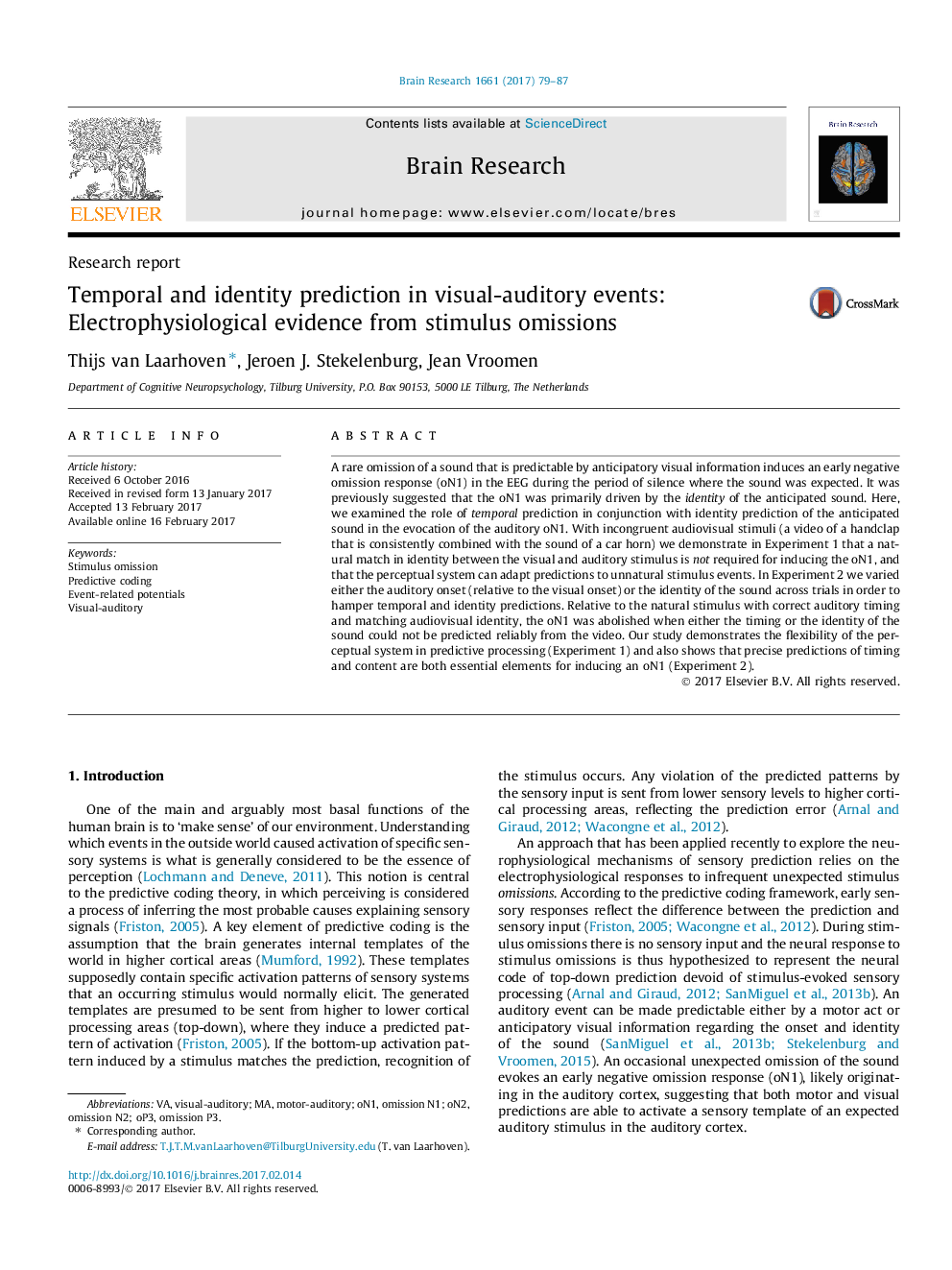| کد مقاله | کد نشریه | سال انتشار | مقاله انگلیسی | نسخه تمام متن |
|---|---|---|---|---|
| 5736806 | 1613784 | 2017 | 9 صفحه PDF | دانلود رایگان |
- The role of timing and identity in visual-to-auditory predictions was investigated.
- Prediction was measured by the oN1 elicited by occasional omissions of the sound.
- A natural audiovisual match in identity is not required for the auditory oN1.
- The oN1 is absent when visual prediction of timing or identity is hampered.
- Predictions of timing and identity are both essential elements for inducing an oN1.
A rare omission of a sound that is predictable by anticipatory visual information induces an early negative omission response (oN1) in the EEG during the period of silence where the sound was expected. It was previously suggested that the oN1 was primarily driven by the identity of the anticipated sound. Here, we examined the role of temporal prediction in conjunction with identity prediction of the anticipated sound in the evocation of the auditory oN1. With incongruent audiovisual stimuli (a video of a handclap that is consistently combined with the sound of a car horn) we demonstrate in Experiment 1 that a natural match in identity between the visual and auditory stimulus is not required for inducing the oN1, and that the perceptual system can adapt predictions to unnatural stimulus events. In Experiment 2 we varied either the auditory onset (relative to the visual onset) or the identity of the sound across trials in order to hamper temporal and identity predictions. Relative to the natural stimulus with correct auditory timing and matching audiovisual identity, the oN1 was abolished when either the timing or the identity of the sound could not be predicted reliably from the video. Our study demonstrates the flexibility of the perceptual system in predictive processing (Experiment 1) and also shows that precise predictions of timing and content are both essential elements for inducing an oN1 (Experiment 2).
Journal: Brain Research - Volume 1661, 15 April 2017, Pages 79-87
